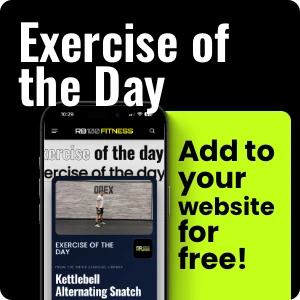7 Surprisingly Fun Ways YOU Can Move Better, Feel Younger, and Live Longer
Movement isn’t optional—it’s essential. There is no substitute for movement when we’re aiming for longevity. Harvard Health Publishing names swimming, tai chi, strength training, walking, and Kegel exercises as the five best ways to stay fit, vital, and functional well into older age. But new science—and some newer forms of movement—can also help keep your body and brain thriving.
Why Movement Is Medicine
Exercise improves far more than just your waistline. Regular movement helps prevent heart disease, dementia, stroke, type 2 diabetes, osteoporosis, anxiety, and depression. It boosts mood, sharpens cognition, improves sleep, and even enhances your immune system.
The key? Make it consistent, enjoyable, and balanced across multiple movement types. Here are 7 movement strategies to build a program that supports lifelong vitality.
1. Walking: The Underrated Longevity Exercise
For years, 10,000 steps was the magic number, but research shows that 7,500 steps daily is enough to significantly lower mortality risk. Walking improves heart function, brain health, blood sugar regulation, and emotional well-being.
How Much:
- 7,500-10,000 steps daily.
- Incorporate incline walking, hiking, or brisk intervals to elevate heart rate.
- Use habit stacking (e.g., walking calls or meetings) to integrate movement into daily life.
2. Swimming: Full-Body, Joint-Friendly Fitness
Swimming protects joints while improving cardiovascular health, strength, and mood. The buoyancy reduces joint impact, making it ideal for those with arthritis, injuries, or chronic pain.
How Much:
- 30-minute swim sessions, 3-5 times weekly.
- Water aerobics or lap swimming both provide excellent benefits.
3. Strength Training: Your Anti-Aging Power Tool
Resistance training preserves muscle mass, improves bone density, boosts metabolic rate, and enhances glucose regulation. It’s critical for preventing frailty and falls as we age.
How Much:
- 2-3 strength sessions weekly.
- Use free weights, machines, resistance bands, or bodyweight exercises.
- Consult a trainer initially for proper form.
4. Tai Chi & Qigong: Balance, Mindfulness, and Healing Energy
These ancient practices combine gentle movement with mindfulness and breath control. Studies show they improve balance, reduce fall risk, lower blood pressure, and relieve anxiety.
How Much:
- Practice 2-5 times weekly.
- Online videos make it easy to learn from home.
- Even short daily sessions provide cumulative benefits.
5. Kegel Exercises: The Pelvic Floor Secret
Often overlooked, Kegel exercises strengthen pelvic floor muscles that support the bladder and reproductive organs, reducing incontinence and enhancing core stability for both men and women.
How Much:
- Perform 3 sets of 10-15 contractions daily.
- Engage both quick and sustained holds.
6. Rebound Exercise: NASA-Approved Fun
Rebounding (bouncing on mini-trampolines or wearable jumpers like Kangoo Jumps) improves cardiovascular health, lymphatic flow, bone density, coordination, and balance—with lower joint impact than running.
How Much:
- 45-60 total minutes weekly.
- Divide into multiple short sessions.
- Even gentle bouncing stimulates lymph flow and boosts energy.
7. Vibration Plates
Vibration plates use oscillating platforms to stimulate muscles and bones, improving strength, lymphatic drainage, posture, and balance.
How Much:
- Vibration plate: 10-15 minutes, 3-4 times weekly. Daily use promotes stronger bones.
Bonus: Zone 2 Cardio for Longevity
Zone 2 cardio—steady-state aerobic work—optimizes mitochondrial health and metabolic flexibility.
How Much:
- 150 minutes weekly (e.g., 30 minutes, 5 times per week).
- Activities include cycling, elliptical, brisk walking, or swimming at a pace that allows conversation but feels moderately challenging.
The Bottom Line
You don’t need a perfect workout plan—you need a consistent movement habit. Just get started. Don’t let perfect be the enemy of good. With variety, consistency, and a willingness to try new things, you can use movement to protect your health, extend your healthspan, and feel amazing at every stage of life.
Remember: Movement isn’t a task—it’s your greatest investment in lifelong vitality.

Written By Dr. Julianna Lindsey
Dr. Julianna Lindsey is Board Certified in Internal Medicine with additional training and certifications in anti-aging and regenerative medicine, functional and integrative medicine, lifestyle medicine, bioidentical hormone optimization, and peptide therapy. In addition to her clinical work, she has spent the past fifteen years serving executive leadership roles at Fortune-level companies. During this time, she observed the dysfunction of our health care system on a large scale, an experience that contributed to her motivation in establishing her Radiant Longevity clinic in Southlake, Texas, where she dedicates her life to serving people through personalized care and attention. She is the author of Radiant Longevity: A Physician’s Protocol for Living Your Best Life (Brown Books Publishing Group (May 27, 2025). Learn more at Radiant Longevity.














